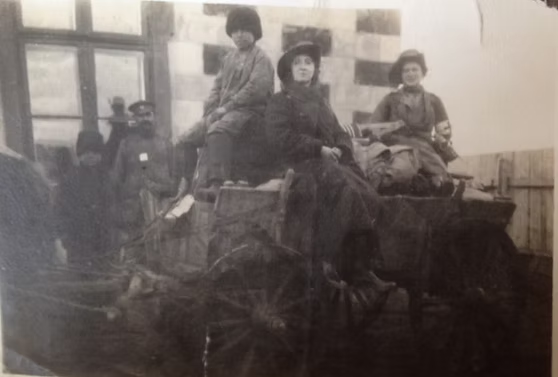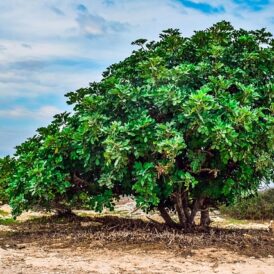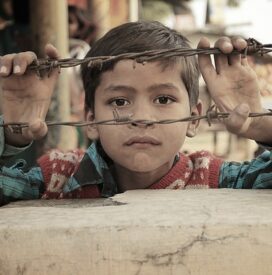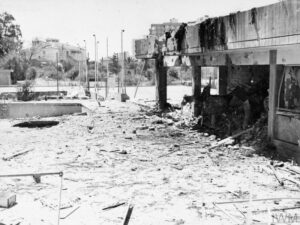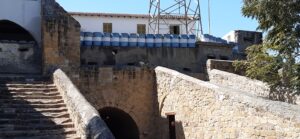War & Peace
poems and stories
scroll down to read poems and stories in our
latest strand
growing from April 2025
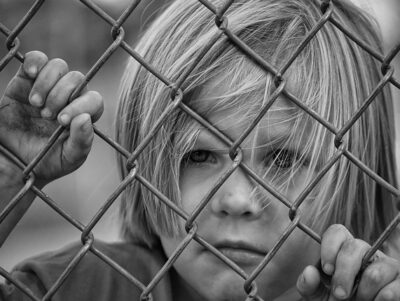
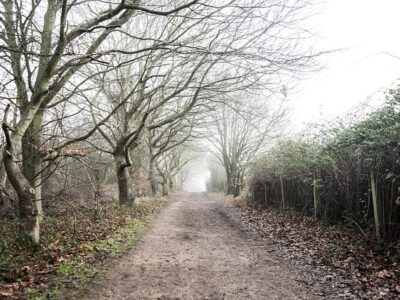
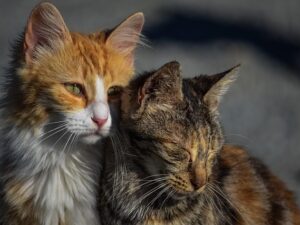
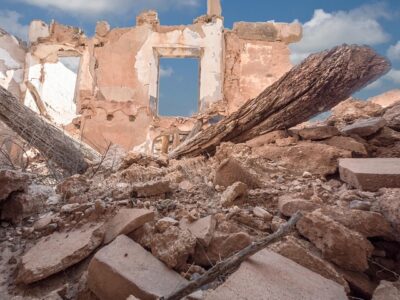
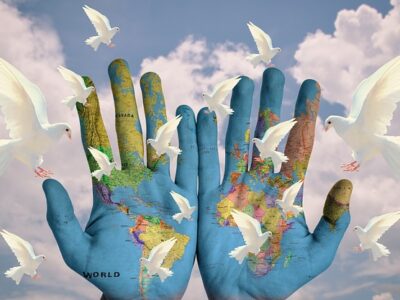
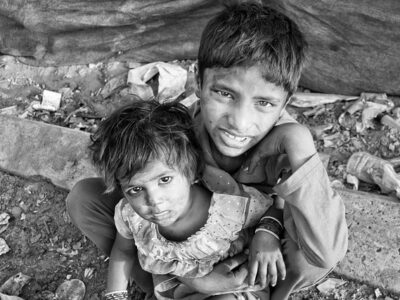

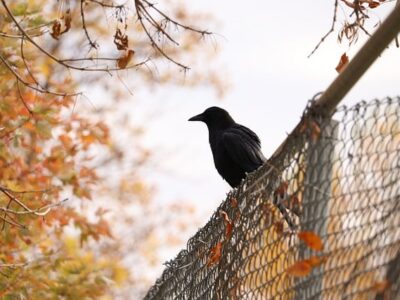
meet the poets and writers
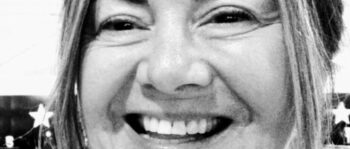
Kathy Finney

Claire Booker

Hilary Hares

Sue Davies

Raine Geoghegan
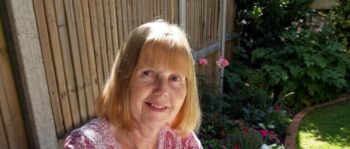
Kate Young

Joseph Long

Lizzie Ballagher

Glenn Hubbard

Sally Russell

Sue Spiers

Andrew Howdle

Tony Cavender
War & Peace
Scroll down to read our latest poem
in memory of Kevin Barrett
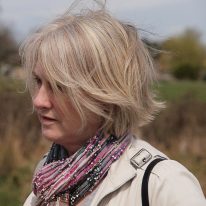
Sally Russell is a Hampshire-based writer and musician with an MA in creative writing. She writes poetry that examines social relationships and family. Her work can be found in a number of journals and anthologies including Canberra University’s AXON, the Bangor Literary Journal and the Welsh Poetry Competition anthology. Sally has provided technical support for Loose Muse and facilitated a poetry critique group. She also belongs to Winchester Muse and the Hampshire Writers’ Society.
Take One Hundred Boys…
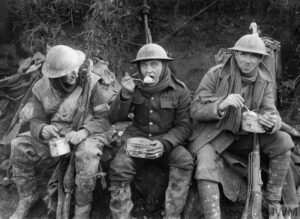
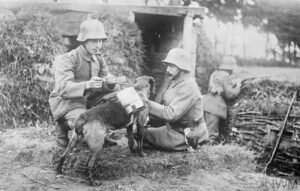
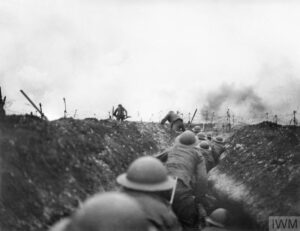
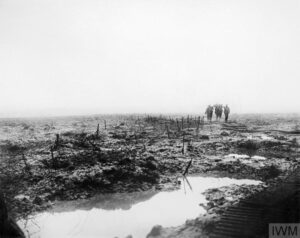

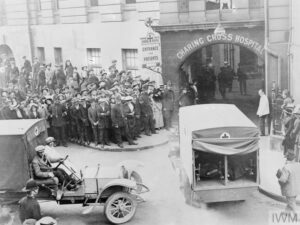
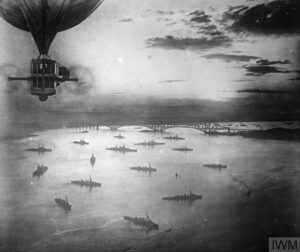
…freckle-faced, sandy-haired,
chestnut eyes, tight black curls.
Tall boys, short boys, cocky lads, shy boys,
ciggies on lips, bitten nails,
boys with coal dust in their shoes.
Proud chins thrust high under peaked caps,
khaki tunics, sweetheart’s picture tucked away,
hobnail boots march left, right, left, right.
Oh! The glory.
Plunge into a melting pot of icy winds,
flooded trenches, mud, rats, lice.
Mix in a common purpose, a fire of shells,
grenades and tanks.
Stir with the gasp of poison gas,
whose poker-hot fingers singe the lungs.
Sniff an aroma of rotting flesh, faeces.
The stench of Hell.
Yields 12 amputees, 14 razor-scorched chests,
11 walking wounded, 29 shattered minds.
Eyes stare forever at Flanders Fields,
ears echo boom and rattle of fire,
comrades’ death cries.
33 tiny white crosses
and one deserter, shot like a hare.
Serve with a dash of homecoming parade.
Crowds roar, paper flags flutter above their heads
as the boys limp along, minds numb.
Sally Russell
Photo Credits:
All Imperial War Museum Images: © Crown copyright reproduced under delegated authority from The Keeper of Public Records.
Long line of troops marching off to rest camp after disembarking for the first time in France. Image: IWM (Q 33306)
THE BATTLE OF THE SOMME, JULY-NOVEMBER 1916 IWM (Q 1580) British soldiers eating hot rations in the Ancre Valley during the Battle of the Somme, October 1916.
THE GERMAN ARMY ON THE WESTERN FRONT, 1914-1918 IWM (Q 23700) A despatch dog brings food to two German soldiers in an advanced trench, somewhere on the Western Front. The dog is wearing a special harness on its back which can hold mess tins. In the background, a third soldier can be seen pointing his rifle over the top of the trench.
THE GERMAN WITHDRAWAL TO THE HINDENBURG LINE, MARCH-APRIL 1917 IWM (Q 5100) John Warwick Brooke, the official photographer, followed them in the sap, into which a shell fell short killing seven men.
GENERAL SCENES ON THE WESTERN FRONT DURING THE FIRST WORLD WAR: THE THIRD BATTLE OF YPRES, PASSCHENDAELE, 1917 IWM (CO 2252) Canadian stretcher bearers carrying a wounded soldier through the mud of the Ypres Salient, 1917.
THE BATTLE OF PASSCHENDAELE, JULY-NOVEMBER 1917 IWM (Q 5916) A doctor tends to a shoulder wound at a Regimental Aid Post set up in a captured German ammunition dump at Oosttaverne, near Ypres, August 1917.
THE MEDICAL SERVICES ON THE HOME FRONT, 1914-1918 IWM (Q 53275) Wounded servicemen arrive in ambulances at Charing Cross Hospital on Agar Street London, September 1914. Onlookers crowd the pavements to view the servicemen.
FIRST WORLD WAR IWM (Q 20633) An aerial view of a portion of the Grand Fleet at anchor in the Firth of Forth, taken from the British Airship R. 9.
Apocalyptic explosion: Pixabay by ds-grafikdesign
Below: A raiding party of the 1/8th (Irish) King’s Liverpool Regiment, 55th Division, at Wailly, France. Photograph taken the morning after a night raid during the 17/18th April 1916. Image: IWM (Q 510)
Featured Image: IWM (Q 54564) THE BRITISH HOME FRONT, 1914-1918 (Q 54564) A long queue of children and women awaiting their turn to receive hot food at a public kitchen at 104 Westminster Bridge Road, London. The kitchen was opened by Queen Mary.
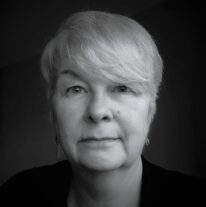
Sue Spiers lives in Hampshire and works with Winchester Poetry Festival. Sue’s poems have appeared in Acumen, Dawn Treader, Dreich, Fenland Poetry Journal, The North, Obsessed with Pipework and Sarasvati. She is the profile poet in South issue 70. Sue’s on-line poems are at Broken Spine, Dust, The High Window and Ink, Sweat & Tears. Her 2023 collection is De Do Do Do, De Da Da Da. Sue is a Wave 17 iamb poet. Her pamphlet: A Wallet of Creature Poems was published by Hedgehog Press in June 2024. In December Hedgehog Press, announced ‘Dandarabilla’ from the collection was one of his nominations for a Pushcart Prize. Sue Tweets @spiropoetry, Bluesky: @spiropoetry.bsky.social
Image: IWM (MH 33800)
1974
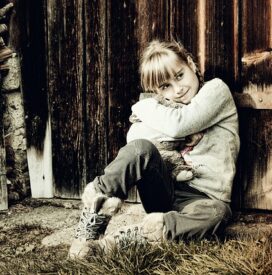
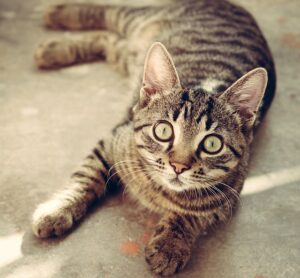
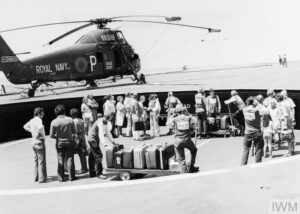
IWM (MH 33994)
The first I knew was mum reading out
Irene’s letter, then we looked for news.
Turkey invades Cyprus as a headline;
a bald statement absent of detail.
Arthur had to stay behind, no seat,
priority to ship out civilians, a skeleton
force kept to hold strategic positions
while Cypriots fought for their land.
Families had one day’s notice to leave,
transported like so much NAAFI cargo,
kids clinging to Hurricane webbing,
Brise Norton landing, stowed in a hangar.
Irene wrote of camp beds and blankets,
a make-shift latrine and army canteen
of lumpy mash, mushy peas and spam,
queuing to sign-up for family quarters.
Scabby Nicola left behind her tabby cat,
Theresa, dad’s joke, Green lost Tiny Tears
I would have had to abandon books,
no Lego, no solitaire, no dominoes.
Mum sent mail to rank and serial numbers,
not knowing where to find friends
scrambled to temporary accommodation,
bunked in with relatives or staying put.
Salamis families were forced south,
taking over ransacked blue verandahs,
making do with army issue furniture –
strange belongings in a shell of home.
Sue Spiers
Photo Credits:
People in lorry: IWM (MH 33800)
Background: Airline Hangar: IWM (MH 33996)
Girl: Pixabay by Pezibear
Tabby Cat: Pixabay by Sbringser
One O’Clock – Paphos Gate, Nicosia
Air is hot where we sit in the shade of a carob tree.
The water in our water bottle is warm
as is the plastic bottle.
The end of the street is barricaded
with oil drums filled with concrete, rusted barbed wire
stretched over a metal Y no one climbs.
There’s a sign against the sandbags,
one of welcome from the Catholic church*,
the mouth of its doorway neutral in this instance.
Its front door opens into dangerous darkness.
The obstacle of metal and wire climbs over its tiles.
Behind, there’s a square bell tower come watch tower.
The back wall of the church is in a different country.
The church could be a meeting place
for separated families.
Small cavities pock the sandstone façade
like bullet holes, no. I realise they are bullet holes.
Repairs to this side show neat grey paving.
Cars run the serpentine street
diverted away from this dead end, follow
its fresh yellow lines away from this fleeting rest place.
We drink the last of the tepid water,
consult the map of the city’s bastions, where to look next.
The bell strikes a solitary chime as we walk away.
*Holy Cross, Catholic Church
Sue Spiers
Photo Credits:
All Imperial War Museum Images: © Crown copyright reproduced under delegated authority from The Keeper of Public Records.
Carob Tree: Pixabay by Dimitrivetsikas1969
Boy and Barbed Wire: Pixabay by Kantsmith
NAAFI Shop Famagusta: IWM (MH 33842)
Paphos Gate by Sue Spiers
Background: Paphos Gate by Sue Spiers
Below: Airline Hangar: IWM (MH 33996)

New Genesis: Gaza
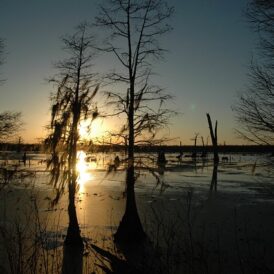
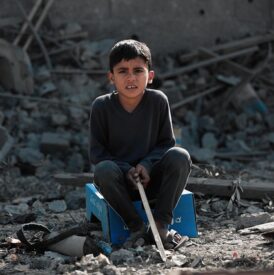
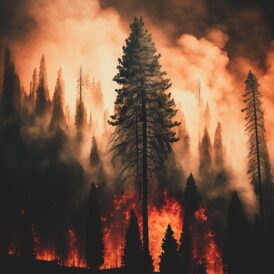
Photo Credits:
Top: Gaza. Children with water: Pixabay by hosnysalah
Background: Pixabay by AdonesFAO
Swamp: Pixabay by zmortero
Gaza: Boy in rubble: Pixabay by hosnysalah
Fire: Pixabay by CharlVera
Below: Gaza. Pixabay by hosnysalah
In the beginning of the end, Death moved
Over the mask of the waters, breathing
In putrefaction that bred mosquitos
And flesh flies. And Death said, Let there be light:
And there was a flash of white phosphorus
Across mountains of rubble, a smokescreen
Of desolation that split grey concrete
Into clouds of asbestos. And Death saw
That it was good, not caring that humans
And their household animals would suffer
A silent and cancerous end. For days,
The bombs rained, until night could not be told
From day, and Death said, Let the foul waters
Bring forth pestilence: so those without aid
Might feel the thrust of the mosquito’s quick
Injection and maggots might sanitise
The carcasses of the dead. Let us watch
As human sewage poisons fish and those
That eat the fish are polluted in turn.
On the final day, having seen that man
Was made in his own image, Death rejoiced
That sky and earth, finally, were finished.
Andrew Howdle
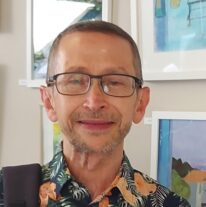
Tony Cavender grew up where industrial East Lancashire borders on rugged Bronte country. A keen walker, he has hiked in the Karakoram, Picos de Europa, Pyrenees, Alpuharras, and the Alps. In this country, his favourite places are in Cornwall and the Lake District
He is a retired teacher (a former Head of English, Modern Languages and Humanities) and has a particular interest in the poetry of the First World War. He has self-published two collections of poetry, and has had poems published by Paper Swans Press and Winchester Poetry Festival.
Paul Nash’s Trees
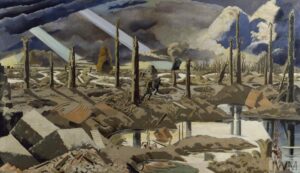
The Menin Road by Paul Nash © © IWM Art.IWM ART 2242 (WMR-82021)
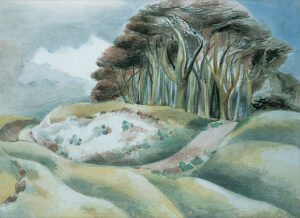
Wittenham by Paul Nash
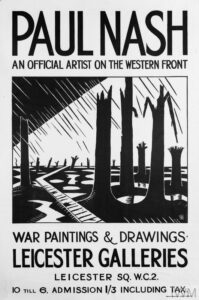
IWM (Q 82530)
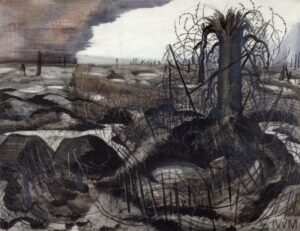
Wire by Paul Nash
IWM (Art.IWM ART 2705)
By the side of the Menin Road
The trees are linked
In silent mycorrhizal agony.
Stripped of bark and leaf,
Oak and ash and poplar
Are indistinguishable skeletons
Scarecrowing a bird-less sky.
Around them the ground humps and gapes;
Yellow water suppurates in muddy holes.
High on Wittenham Clumps
The trees are cheerful,
Wearing their spring-green finery
Like the feathers in the hats
Of elegant, race-going ladies.
Below them the ground is rich brown earth
Blood and bone have fertilised
Over and over, over the centuries
Of human occupation.
Tony Cavender
Photo Credits:
Images from The Imperial War Museum © Crown copyright reproduced under delegated authority from The Keeper of Public Records.
The Menin Road by Paul Nash Credit: © © IWM Art.IWM ART 2242 (WMR-82021)
Wittenham 1935 by Paul Nash. Watercolour on paper. Pallant House Gallery, Chichester
Paul Nash Poster: Copyright: © IWM. Original Source: http://www.iwm.org.uk/collections/item/object/205326777
Wire: Image: © IWM (Art.IWM ART 2705)
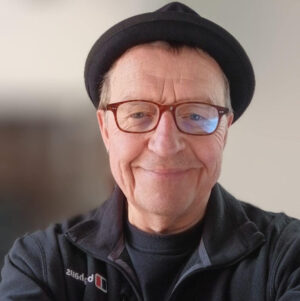
Glenn Hubbard lives in Newcastle. He began writing in 2013 and has had work published in a variety of journals including Stand, Strix, and London Grip. Although it may not always be obvious, he owes a great deal to the poetry of R.F. Langley.
Glenn Hubbard – PHOTO OF A HOWITZER FIRING IN UKRAINE
PHOTO OF A HOWITZER FIRING IN UKRAINE
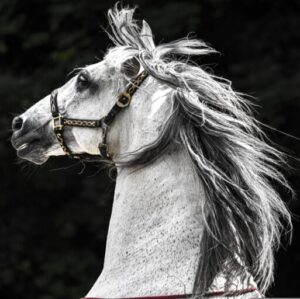
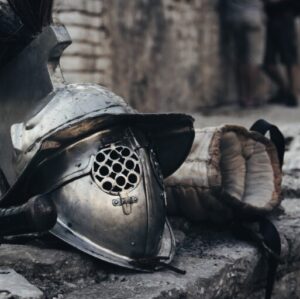
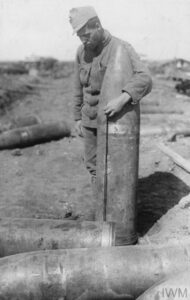
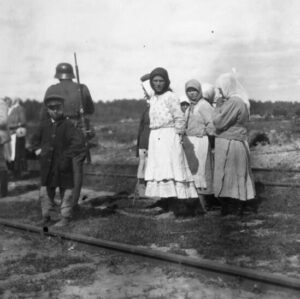
Houfnice.
Used by the Hussites
in pre-Reformation days.
Fired into Catholic cavalry
to make mounted horses shy
knights in armour fly.
Not nice.
Houf
is a crowd. But for this
pronouncement just five.
Three crouch, eyes cast down
ears covered as if fearing
the report, like a judgement.
Another kneels in attendance,
awaiting the fatal determination.
Uff!
The last looks on
awed by the bright yellow rorschach blot
blooming in the grey sky.
He may be praying, die Hoffnung:
that many will die; a thousand,
in Haufen, heaps of them.
Though they too are cherished
by mothers with prayer ropes,
their hands tied.
Hussites: Czech proto-Protestant Christians
Houfnice (Czech): A cannon used by the Hussites during the war (1419-1434) against Catholic forces.
Houf (Czech): A crowd
(die) Hoffnung (German): (the) hope
Haufen (German): piles, heaps
Glenn Hubbard
Picture Credits:
All Imperial War Museum Images: © Crown copyright reproduced under delegated authority from The Keeper of Public Records.
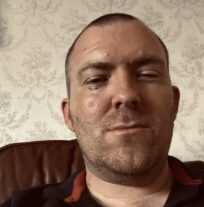
Joseph Long lives and works on the Medway as a father and Engineer, writing poetry between shifts. He has a passion for works which reflect working class life & culture and his main influences are John Cooper Clarke, Christopher Reid, Anna Akhmatova, Seamus Heaney, Ian Hamilton & Douglas Dunn.
Joseph has been published by Stand, Blackbox Manifold, The Amethyst Review, Littoral and he was also highly commended in the Erbacce Prize for Poetry in 2024..
Joseph Long – A Small Village in Suffolk
A Small Village in Suffolk
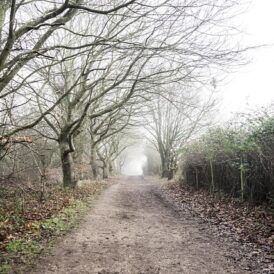
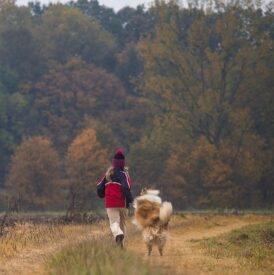
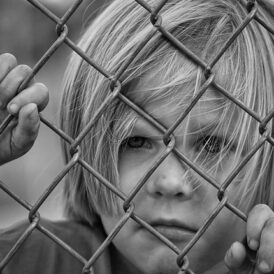
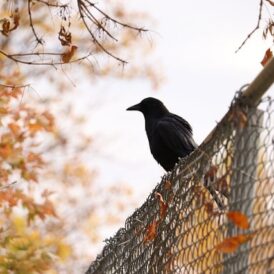
Photo Credits:
Boy on Bike via Pixabay
Nuclear explosion: Image: IWM (TR 65682B)
Lane: Whitechappel79 via Pixabay
Child and Dog: Kanashi via Pixabay
Child Fence: Greyerbaby via Pixabay
Bird Fence: Surely via Pixabay
Barbed Wire Man: FuN_Lucky via Pixabay
At the end of the lane is the end of the line,
a front line – and to rational actors, a line
in the sand. It was once, just a lane – pitted, rutted.
Before host nation cared, before the tack tarmac
laden trucks backed up one morning, without warning.
Before sheep walks became elephant proof, before
bridle turned taxiway. In those days of small things,
we would cycle down to feel spring speedwell against
sole, nape. To scent sheep-cropped fescue, scatter curlew,
pick scrape for eggs. Our incursions were good tidy
before chain links. After links and lateral scars
were carved in our Breckland sward, did mining bee care?
Did hare, turn a hair? Would curlew sorties confirm /
deny what was there? There may be no amara!
So, we all sought to play in this rum, conjured base.
Before gauges swayed and our Suffolk sands turned to glass.
Before rolling, oiled cumulus caught us and its
torrid breeze roiled our broadleaf trees. Before we heard
soundless call or dull pedal notes. Before cuckoo
clocks got giddy, beneath our feet in rumoured vaults.
We boys were curious for more than blast pens or
tube alloys – and the digger wasp would help us. Help
delve down to those vaults below chalk, clay, flint and silt.
Where we’d scamper down surety warrens – play war games,
take names amongst Harvard Candles born of the dawn.
Once, our insignificance might have saved us. Since,
we’ve learnt the humility of grazing ruminant –
ready for ritual slaughter. Generations
of crick neck, sloped back – gazing into the middle
distance (or below), in our small village in Suffolk.
Note: Although never officially confirmed, US nuclear weapons were based at RAF Lakenheath, Suffolk from the 1950s until the 1990s. They are due to return.
Joseph Long
A Letter to Gilbert White by Robyn Bolam
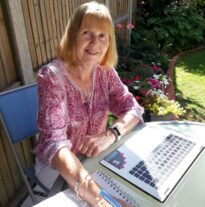
Kate Young’s poetry has appeared in journals and online. It was also included in Places of Poetry and Write Out Loud. Her pamphlets A Spark in the Darkness and Beyond the School Gate have been published with Hedgehog Press. Find her on X @Kateyoung12poet or her website kateyoungpoet.co.uk
Kate Young – Nothing Has Changed
Nothing Has Changed
After Imagine, by John Lennon
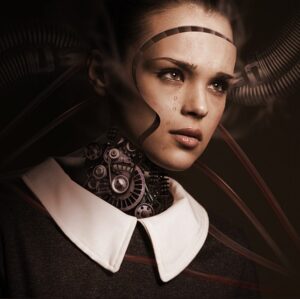
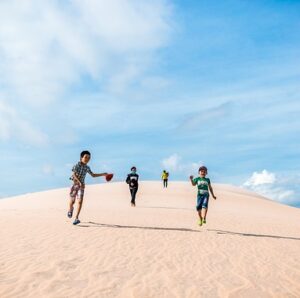

Photo Credits:
Tree Sun: TheDigitalArtist via Pixabay
Blue Flowers: FoYu via Pixabay
Children Sand: ThanhTN via Pixabay
Child Poverty: billycm via Pixabay
Hands Doves: NoName_13 via Pixabay
Imagine: gOutier via Pixabay
Ghosts will vaporise and tell you otherwise –
they are wrong.
They’ll feed you visions of advancement,
ask you to taste their driverless cars,
roll a 5g network over your tongue,
savour a lyric penned by AI.
The lie is ferric – spit it out.
How is that imagination John?
You dreamed of borderless, religious-less,
hunger-less nations sharing all the world –
reality is a bullet in the back of Manhattan
a crimson gash ribbled on stone
and crushed in the rubble of Gaza,
a convoy of crater-skulls lining the road
in the ashen remains of Ukraine,
a dull-eyed child absorbed in PVC
on shores that throw back the shingle,
a trudge of commas making no sense.
I let you sing me to sleep,
the oh-so-simple riff of piano keys
lifting, shifting to resolution.
Keep dreaming John, keep dreaming.
Kate Young
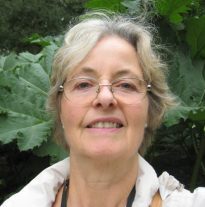
A published novelist between 1984 and 1996 in North America, the UK, Australasia, Netherlands and Sweden (pen-name Elizabeth Gibson), Lizzie Ballagher now writes poetry rather than fiction. Her work has been featured in a variety of magazines and webzines: Nine Muses, Nitrogen House, the Ekphrastic Review, South-East Walker Magazine, Far East, and Poetry Space.
She lives in southern England, writing a blog at
https://lizzieballagherpoetry.wordpress.com/.
Lizzie Ballagher – Cat Man of Kafr Nabl
Cat Man of Kafr Nabl


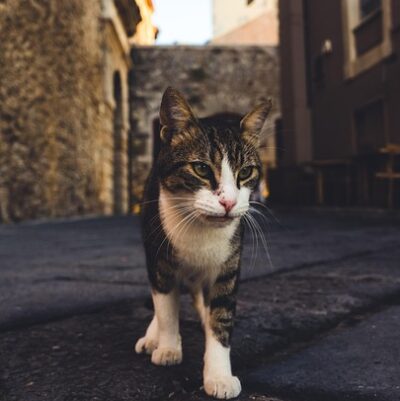
Photo Credits:
(above) – GenArt via Pixabay
cat on steps – christels via Pixabay
pair – umaraziz24 via Pixabay
Leonhard_Niederwimmer via Pixabay
Syria bombed – Karabo_Spain via Pixabay
(below) – dimitrisvetsikas1969
Cats crouch in corners,
or follow, weaving
round your legs in terror when
you duck across the street….
Bombs, rockets pound your walls,
shatter dreams to cinders, turn all
to dust: bloodless, without hope.
When shells burst,
Kafr Nabl shakes:
streets are streaked with tabbies,
the once creamy-coated,
with ginger toms & tiger stripes,
cadaverous silver cats famished,
tarnished in the smut of war.
At night cats’ eyes blink green
as shock-waves of artillery
& mewling, yowling cries
drench sudden air.
Careless death descends
in fiery embers,
incandescent shrapnel. War slams
life’s voices shut. Cats have not
asked for conflict, or for pity.
But you will feed them milk, noodles, lentils—
whatever you can scavenge, prowling,
running on all fours between basements,
now a cat yourself, your shadow streaked
as theirs: your soul furred with suffering.
Your breastbone shifts in pity.
In this barrage-wrecked town,
your arms will cradle them against
the crump & leap of your own heart.
Purring, they will comfort you…
although their needle teeth, their claws
are as much a match for missiles
as your broken fingernails.
Lizzie Ballagher

We would like to dedicate this theme to Kevin Barrett who was a long time member of Winchester Muse and fine poet.
Kevin Barrett was born in Winchester where he was very active on the local poetry scene. He studied with the Open University, obtaining an honours degree in humanities and literature. He won the Orbis International Journal’s Readers Award and his poem “Winter Solstice” was Hampshire County Council’s poem of the day. He was published in several journals and anthologies and his pamphlet I Died in Hell. (They Call it Passchendale) and his first collection were published in 2017. Kevin will be remembered for his powerful war poetry.
Here is a link to Kevin’s wonderful poem, The Trees. Scroll down to read another of Kevin’s poems ‘Wounded in Action’.
Kevin Barrett – Wounded in Action
Wounded in Action
K.J. Barrett
First published in 2024 by the Open University in Openings 41.
If you would like to submit, read on.
Our theme for Spring 2025 is War & Peace.
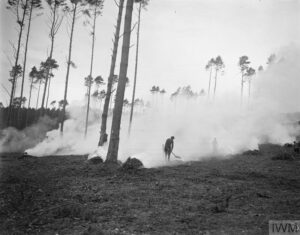
All Imperial War Museum Images: © Crown copyright reproduced under delegated authority from The Keeper of Public Records.
THE INDIAN LABOUR CORPS ON THE WESTERN FRONT 1916-1918 Indian troops burning charcoal in the Forest of Brotonne, 22 January 1918. Copyright: © IWM. Original Source: http://www.iwm.org.uk/collections/item/object/205244349
Image Permission: IWM (Q 8495)
Submission Guidelines
Please send up to 4 poems as a single Word document attachment (with your name at the start of the attachment’s name) to submit@wordsforthewild.co.uk. Poems should be a maximum of 40 lines.
Please send up to 2 stories as a single Word document attachment (with your name at the start of the attachment’s name) to submit@wordsforthewild.co.uk. Stories should be a maximum of around 2,000 words.
Use WAR & PEACE as the subject of your email.
Closing date for the theme will be 30th May. Please bear with us if you experience a delay in our response to your submission.
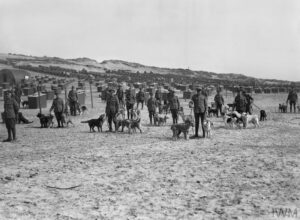
WAR DOGS DURING THE FIRST WORLD WAR, WESTERN FRONT, 1918 A group of dog handlers stand with their dogs at the British Army kennels near Etaples, 20 April 1918. The rows of kennels can be seen behind them. Copyright: © IWM. Original Source: http://www.iwm.org.uk/collections/item/object/205213159
Image Permission: IWM (Q 29549)
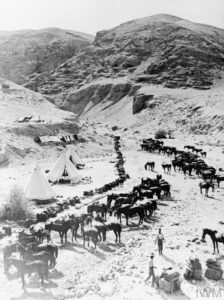
AUSTRALIAN FORCES IN THE MIDDLE EAST A Squadron, 9th Australian Light Horse Regiment encamped in the Jordan Valley near Jericho, 17 August 1918. Fighting as mounted infantry, the men of the Light Horse were mostly bushmen used to handling horses and rifles, and they could tolerate the summer heat of Palestine. Copyright: © IWM. Original Source: http://www.iwm.org.uk/collections/item/object/205213127
Image Permission : IWM (E(AUS)5559)
We are happy to take previously published work. If you would like to submit, please send up to four poems or up to two short stories in a word document to: submit@wordsforthewild.co.uk with your name in the attachment’s name. We look forward to going wherever you take us.
Other image credits:
Wild Flowers: Louise
Sun and Moon Bru_nO via Pixabay
Pony Trap – Susannah in Russia 1917: Amanda
Horse’s Eye: Pezibear Pixabay
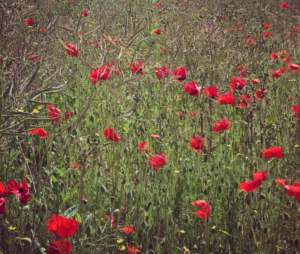
War & Peace
In memory of Kevin Barrett
Our theme for Spring 2025 is War & Peace.
We hardly need an introduction to this theme; War seems to be all around us in one form or another. Peace, less so.
Perhaps a few concepts might be worth considering.
By definition, War is characterised by widespread violence, destruction and mortality. Peace may be defined as an absence or cessation of hostilities.
The natural world is always impacted.
It’s a huge theme with a vast array of associated emotions but consider your focus. It might be more powerful to tone down the rhetoric, focus on minutiae or perhaps not. You might choose to explore either War or Peace or both. Perhaps it is worth repeating, remember how the natural world is impacted.
